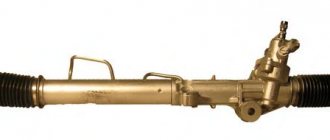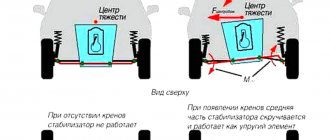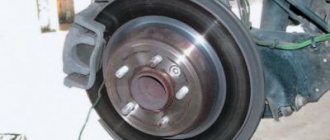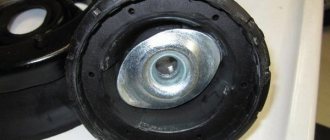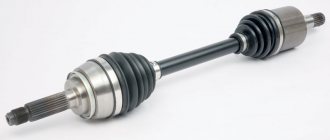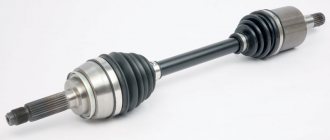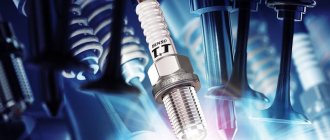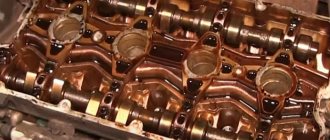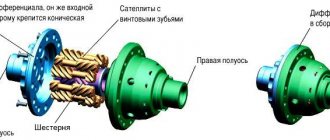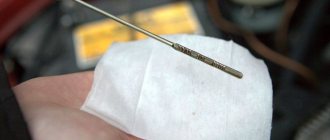The car's suspension has to fulfill its tasks of providing ride comfort and controllability in a wide variety of road conditions. Because of this, almost all of its properties and numerical characteristics have to be chosen for reasons of compromise, which does not allow achieving the ideal in principle.
The only thing that can help in such a situation is to complicate the suspension by adding the ability to adapt to current conditions. This makes the suspension active, although adaptation is only a special case of active suspensions as a class.
What is adaptive suspension
From the very name that the suspension is adaptive, it becomes clear - the system can automatically or through commands from the on-board computer change certain characteristics, parameters and adapt to the requirements of the driver or the road surface. In some manufacturers, this version of the mechanism is also called semi-active.
The main characteristic of the entire mechanism is the degree of damping of the shock absorbers (the rate of vibration damping and minimizing the transfer of shocks to the body). The first mentions of the adaptive mechanism have been known since the 50s of the twentieth century. Then manufacturers began to use hydropneumatic struts instead of traditional shock absorbers and springs. Hydraulic cylinders and hydraulic accumulators in the form of spheres served as the basis. The principle of operation was quite simple, by changing the fluid pressure, the parameters of the base and chassis of the car changed.
The first car to feature a hydropneumatic strut was Citroen, released in 1954. Later, the same mechanism began to be used for DS brand cars, and starting in the 90s, the Hydractive suspension appeared, which engineers use and refine to this day. By adding electronics and automatic control systems, the mechanism can independently adapt to the road surface or the driver's driving style. Thus, it is clear that the main part of the adaptive mechanism these days is electronics and hydropneumatic struts, capable of changing characteristics based on different sensors and analysis of the on-board computer.
Adjustment
The adaptation can be adjusted using the controls from the driver's seat. This comes down to a rough prediction of operating conditions. For high-speed runs on highways, it is better to use the sport mode, and on not very high-quality roads, choose comfort and off-road.
It is also possible to intervene in individual elements via the on-board computer. Mechanical adjustments are available, but are practically not used; it is easier to make adjustments from a dealer scanner.
For example, create a purely author’s set of suspension parameters and remember it as a separate user mode. Just like when adjusting the seats, a car remembers a specific driver.
Types of active suspension
Adaptive suspension
Adaptive suspension, depending on the method of regulation, the degree of damping, is divided into suspension with a system of electromagnetic valves and with a magnetic rheological fluid inside. Both options are used to this day, but the first one is more common. This is due to several reasons:
- Cheapness;
- Easier to maintain;
- Easy setup;
- Less intensive care required.
The principle of operation is as follows. A variety of sensors perceive all the necessary information and then transmit the data to the electronic control unit. There, the information is processed, from which the computer draws a conclusion about determining the required shock absorber stiffness in a given situation. When a large current is supplied to the solenoid valves, the diameter of the traversable cross-section decreases, which, in turn, increases the stiffness of the suspension.
Suspension with a special fluid works a little differently. The information collected by the sensors is processed by the electronic control unit, then a decision is made to issue a command to supply voltage, only not directly to the solenoid valves, but to an electromagnetic relay built into the piston. The result is a magnetic field that literally controls the magnetic rheological fluid. This liquid contains metal particles, which, under the influence of magnetic forces, line up along the field; accordingly, the consistency becomes viscous, and the pressure is higher and the damping level increases.
The vast majority of car companies are increasingly using active suspension in their designs, and each is trying to call the type of standard technology differently.
Air suspension from Mercedes-Benz
The Adaptive Damping System, which is implemented in the Airmatic Dual Control air suspension, monitors the stiffness of the shock absorbers and sets the ground clearance based on the speed and load of the car. This manufacturer also has a more affordable version of the adaptive suspension - with mechanical adjustment devices. As you can see, the variety of options for implementing active suspension is quite large. All of them are good in their own way, it is quite possible that each has its own shortcomings, but one thing is certain - in pursuit of the buyer, manufacturers (be it BMW or Porsche) are forced to constantly improve the quality of their products and offer something that others do not yet have. The active suspension is clear proof of this.
What else is worth reading
Steering rear wheels
How does a car suspension work?
Family car with high ground clearance
Air suspension device
Independent multi-link suspension
Comfort
Undoubtedly, the comfort obtained while driving with adaptive suspension is higher in comparison with other types of suspensions. With such a system, you will have full control of the car even in the most unpredictable situations, for example, on heavy ice or off-road conditions.
Small or even medium-sized potholes will become simply unnoticeable, and when cornering, body roll will be reduced to a minimum, which will ensure an almost completely horizontal position of the car even when turning quickly.
With all this, you don’t even have to monitor the level of its adjustment and tuning, since the control unit itself decides what stiffness to use for a particular shock absorber.
AVS suspension and similar
Manufacturers of various car brands have created a huge number of adaptive suspensions, with various options for implementing certain options. But the essence of adaptive suspension, also called active suspension, comes down to the fact that it is able to adapt to road conditions. Also, at the driver’s request, the stiffness of this suspension can be changed optionally, that is, from the control unit. Let's look at some options for this type of suspension.
The abbreviation avs (Adaptive Variable Suspension), in common parlance adaptive suspension, is used by Toyota and Lexus, but this does not mean that other cars do not have it. Everyone just calls it in their own way.
- BMW has Adaptive Drive;
- Opel calls this Continuous Damping Control (CDC);
- Porsche calls its active suspension management Porsche Active Suspension Management (PASM);
- Volkswagen's adaptive suspension control is called aDaptive Chassis Control (DCC);
- The stiffness of Mercedes-Benz shock absorbers is monitored by the Adaptive Damping System (ADS).
As you can see, many bright minds are working in the field of improving driving comfort, and the results of this work are more than noticeable. Let's look at the most interesting options for implementing active suspension.
How does a car's adaptive suspension work?
Depending on the manufacturer, the suspension may be modified and components may change, but there are elements that will be standard for all options. Typically, this set includes:
- electronic control unit;
- active struts (adjustable car struts);
- anti-roll bars with adjustable function;
- various sensors (road roughness, body roll, ground clearance and others).
Each of the listed elements bears a significant responsibility in the functionality of the car’s adaptive system. Electronic control unit
The car suspension is considered the heart of the mechanism; it is responsible for selecting the mode and setting up individual mechanisms. As a rule, it analyzes information collected from various sensors, or receives a command from a manual unit (selector controlled by the driver). Depending on the type of signal received, the stiffness adjustment will be automatic (if information is collected from sensors) or forced (at the driver’s command).
The essence of the operation of a stabilizer with electronic adjustment
the same as in a conventional anti-roll bar, the only difference is the ability to adjust the degree of rigidity, depending on the command from the control unit. Often it is activated when the vehicle is maneuvering, thereby reducing body roll. The control unit is able to calculate signals in milliseconds, which allows you to instantly respond to road irregularities and different situations.
Sensors for the adaptive base
car - usually special devices whose purpose is to measure and collect information and transmit it to the central control unit. For example, the car acceleration sensor collects data on the quality of the vehicle, and at the moment the body sways, it is triggered and transmits information to the control unit.
The second sensor is a road roughness sensor; it reacts to irregularities and transmits information about the vertical vibration of the car body. Many consider him to be the main one, since he is responsible for further adjustment of the racks. No less important is the car body position sensor; it is responsible for the horizontal position and during maneuvers transmits data on body tilt (during braking or acceleration). Often in such a situation, the car body tilts forward during sudden braking or backwards in the event of sudden acceleration.
The last part of the adaptive system is the adjustable (active) struts
. These elements quickly react to the road surface, as well as to the vehicle’s driving style. Due to changes in fluid pressure inside, the stiffness of the suspension as a whole also changes. Experts distinguish two main types of active struts: with magnetic-rheological fluid and with a solenoid valve.
The first version of active racks
filled with a special liquid. The viscosity of a liquid can change depending on the strength of the electromagnetic field. The higher the fluid resistance to passing through the valve, the more rigid the vehicle's base will be. Such racks are used in Cadillac and Chevrolet (MagneRide) or Audi (Magnetic Ride) cars.
Racks with solenoid valve
change their rigidity by opening or closing the valve (variable cross-section valve). Depending on the command from the control unit, the cross-section changes, and the rigidity of the racks changes accordingly. This type of mechanism can be found on the suspensions of Volkswagen (DCC), Mercedes-Benz (ADS), Toyota (AVS), Opel (CDS) and BMW (EDC).
Principle of operation
Adaptive suspension is a type of suspension that automatically changes its characteristics (adapts) while driving. Let us immediately note that active suspension is a general definition, and an adaptive suspension system is a variation of it.
General view of the adaptive suspension
For successful operation, the system needs to collect information about the current driving conditions of the vehicle - this is done by various sensors. The analyzed information includes the type of road surface, body position, driving parameters, driving style and other data (depending on the type of adaptive chassis). Next, the electronic control unit comes into operation, which in a split second analyzes the data received from the sensors and sends control signals to the actuators - active shock absorber struts and anti-roll bars. As a result, the mechanism instantly adapts to specific conditions.
If a command is received from the manual suspension control unit, the suspension system will begin to adapt to the mode selected by the driver. Typically, three suspension modes are used: normal, comfortable and sport.
How does a car's adaptive suspension work?
It's one thing to understand the basic elements of an adaptive suspension, but it's another thing to understand how it works. After all, it is the operating principle itself that will give an idea of the possibilities and use cases. First, let's consider the option of automatic suspension control, when the on-board computer and electronic control unit are responsible for the level of rigidity and settings. In such a situation, the system collects all information from ground clearance, acceleration and other sensors, and then transmits everything to the control unit.
The video shows how Volkswagen's adaptive suspension works
The latter analyzes the information and draws conclusions about the condition of the road surface, the driver’s driving style and other characteristics of the car. In accordance with the findings, the block transmits commands to adjust the stiffness of the struts, control the anti-roll bar, as well as other elements that are responsible for comfort in the cabin and are tied to the operation of the adaptive basis of the car. It is worth understanding that all elements and parts are interconnected and work not only to receive commands, but also respond to the status, completed commands and the need to adjust certain components. It turns out that the system, in addition to transmitting programmed commands, also learns (adapts) to the driver’s requirements or road irregularities.
Unlike automatic control of a car's adaptive suspension, manual control differs in operating principle. Experts distinguish two main directions: the first is when the driver forcibly sets the rigidity by adjusting the struts (using regulators in the car interior). The second option is semi-manual or semi-automatic
, since initially the modes are hardwired into a special block, and the driver only has to select the travel mode. Accordingly, the adaptive suspension electronic unit transmits commands to the mechanisms to set the rigidity of the mechanism. In this case, information from the sensors is read minimally and is often used to adjust existing parameters to make the base as comfortable as possible for certain road surface conditions. Among the most common settings modes are: normal, sport, comfortable and for off-road driving.
Application of rheological (magnetic) fluid in suspension The composition of the magnetic fluid includes metal particles that, when exposed to a magnetic electric field, line up along the lines of this field. In such a shock absorber, which is filled with magnetic fluid, there are no conventional valves. Instead of such valves, their piston has channels through which liquid flows. The piston device includes coils operating on the electromagnetic principle. When voltage is applied to the coils, particles of the rheological fluid are arranged in direct lines of the electromagnetic field, thus creating resistance in the piston channels. Due to this, damping in a rigid suspension increases. The use of this type of fluid in the creation and design of adaptive suspensions is rarely used: usually in Cadillac, Chevrolet, and Audi cars.
Varieties of input structures Adjustment of deformation of the shock-absorbing system is carried out using electronics. The design of such an electronic system includes input structures, executive structures, and a unit for controlling the system. The following input devices can take part in controlling the semi-active suspension:
- switch for different operating modes;
- sensors (indicators) of road (ground) clearance;
- indicators for body acceleration;
Operating mode switches help adjust suspension damping. The clearance indicator records the travel of the semi-active suspension during compression and rebound. And the body acceleration indicator records acceleration. Based on the type and design of the suspension, the number and characteristics of such indicator sensors may vary. In the Volkswagen suspension, for example, two sensors are installed for clearance and for acceleration.
Operation of indicators Indicators emit signals, and they are already caught by the unit that controls the suspension, and there, using a special program, these signals are processed, and then formed into control signals that go to the following devices - control valves and magnetic coils. While working, the unit that controls such a suspension takes (reads) special information data from units of other vehicle systems. Such units include power steering, as well as devices that control both engines and gearboxes, and so on.
Sensors installed for ride heights read information as the vehicle moves. If there are unevenness on the road or potholes, the car body will sway more strongly, and the system itself will adjust the shock absorption damping.
Sensors monitor the situation on the road. Turns, increasing speed, decreasing speed - they all take this into account. When the driver brakes, the front of the car will drop below the rear. And if it picks up speed, then everything will be the other way around. To ensure that the car body is in a horizontal position, the damping adjustment of the shock absorbers located at the rear and front differs significantly. When a car turns, one side is sure to be higher and the other lower.
During different turns, an inertial force acts on the vehicle, which is why this happens. The system that controls the adaptive suspension splits the adjustment between the left and right shock absorbers, ensuring a stable vehicle position when cornering.
We can conclude that in the process, using signals from indicators and sensors, the unit that controls the adaptive suspension generates signals. Such signals are generated for each shock absorber separately. These factors ensure maximum comfort as well as safe operation of the suspension.
Operating modes The design of a semi-active suspension is usually designed for three operating modes: normal, sport, and comfortable. All these modes can be selected by the driver and depend on his needs and desires. Each mode automatically adjusts damping in accordance with the set parameters.
ADVANTAGES OF ADAPTIVE SUSPENSION:
- High level of comfort regardless of the type of road surface, especially with air suspension. By tightening the shock absorber and spring on a good road and loosening it on bumps, you can achieve stable behavior of the car on any type of surface. In this case, the car body will always be in the same position, regardless of the load.
- Good handling at high speeds and in steep turns. No rocking on the waves. As a rule, switching to sport mode entails a change not only in the stiffness of the shock absorbers, but also in the sharpness of the steering and response to the gas pedal. Allows you to unleash the sporting potential of your car on a race track or other specially prepared track.
- Reducing the load on load-bearing body elements, reducing tire wear, reducing braking distance. All this is ensured by the correct distribution of load along the axles during acceleration and braking.
- Adaptation to the style of each driver , the ability to independently select suspension modes, fine tuning for specific road conditions.
Video: adaptive suspension in operation using the Skoda Superb as an example
DISADVANTAGES OF ADAPTIVE SUSPENSION:
- Device complexity and price . It is clear that such an advanced system cannot do without a large number of sensors, a computer for processing data on speed, vehicle roll, and the shock-absorbing devices themselves in the suspension. The complexity of electronic components can lead to malfunctions, especially in difficult climatic conditions. As a rule, this type of suspension is used in top models of all automakers and is intended for a sophisticated driver.
- Difficulty in further operation implies more qualified service compared to traditional shock absorbers. In most cases, proper setup will require a special scanner and other equipment.
- The reliability of adaptive suspension is lower than that of traditional suspension. This can be decisive when choosing a vehicle for remote areas and off-road use.
- Loss in value when selling a car - this is something you have to deal with after several years of operation, when a car equipped with a modern active suspension can lose more when sold than with a simple mechanical one. Again, it all depends on the quality of the service provided.
Thus, adaptive suspension has become a real breakthrough in the automotive industry. Automakers, combining their various options, began to create cars with unique settings.
This led to an increase in safety and comfort, made it possible to achieve better handling and stability, and made driving a car interesting and exciting.
Malfunctions
The most common sensor failures are due to their continuous operation and the presence of mechanical reading contacts. Problems with sensors can be easily diagnosed using scanner error codes.
Adaptive shock absorbers also require regular replacement. Leaks and breakdowns of electrovalves occur in them. Although in general their reliability is not much worse than that of more traditional units.
The situation is much worse in suspensions using pneumatics. Here the compressor may fail, air cylinders may leak, and control lines may corrode.
Main differences of adaptive suspension
Comparing the adaptive suspension device described above and others, such as multi-link or MacPherson strut, differences can be noticed even without special skills in the field of car design. For example, although MacPherson is comfortable, the intersection between good and bad road surfaces will be felt by passengers inside the car. The controllability of such a suspension is lost on a bad road and is not always the best when driving off-road.
As for adaptive, the driver, in fact, may not understand when the car is on a bad road surface. The system adjusts at lightning speed, changing control conditions and the rigidity of the struts. The sensors become more sensitive, and the racks respond faster to commands from the electronic control unit.
In terms of the design of the mechanism, in addition to specific racks, the system is distinguished by a variety of sensors, the structure of the parts itself, as well as its bulky appearance, which is easy to notice when looking behind the car wheel. It is worth noting that such a car suspension is constantly evolving and there is no point in talking about a specific structure or differences. Engineers from different manufacturers take into account the shortcomings, making expensive parts cheaper, increasing service life and expanding capabilities. If we talk about similarities with other well-known suspensions, then the adaptive system is most suitable for the structure of a multi-link or double wishbone.
Advantages and disadvantages
There is no doubt that such pendants have only one drawback - the high price when ordering this option and significant costs in case of breakdown. The maintenance itself will require highly qualified personnel; a simple chassis technician will no longer be able to cope. Controlled elements will also cost two to three times more than regular ones.
But the benefits outweigh. First of all, this is safety. Adapting the suspension will help avoid accidents associated with loss of vehicle control. The car will cling to the road always and in any conditions, the limit of its speed capabilities in corners is qualitatively shifted towards an increase.
The comfort of active suspensions can also surprise. This is especially true for the most modern systems, when the car is able to recognize an unevenness that it has not yet hit with a wheel.
The chassis literally licks any road profile within wide, but still reasonable limits. The driver and passengers are much less tired and are able to endure long road trips.
Which cars have adaptive suspension installed?
Today it is much easier to find a car with adaptive suspension than it was 10 years ago. We can say that many premium cars or SUVs are equipped with a similar mechanism. Of course, this is a plus for the cost of the car, but also a plus for comfort and control. Among the most popular models are:
- Toyota Land Cruiser Prado;
- Audi Q7;
- BMW X5;
- Mercedes-Benz GL-Class;
- Volkswagen Touareg;
- Opel Movano;
- BMW 3-Series;
- Lexus GX 460;
- Volkswagen Caravelle.
Naturally, this is the minimum list of cars that can be found on the street in any city. Due to its excellent comfort qualities and ability to adapt to the road, the adaptive base is becoming increasingly popular.
Sensors
These are devices designed to measure and collect data that is necessary on the on-board computer to change the settings and parameters of the suspension if necessary.
We hope we've brought a little more clarity to the question of what active suspension is, but let's look at how active suspension works in general.
Imagine that you are driving on the highway and your ride is relatively smooth (as smooth as a normal highway can be). However, one day you decide to leave the highway and take a third-class road littered with potholes.
If you have a standard suspension, you have no choice but to see that vibrations in the cabin increase and your car will bounce more often and more unpleasantly. You should also be careful when driving and drive slower and more carefully, as there is a danger of losing control of the car over any bumps.
However, if you have an active suspension, this change in the type of road surface you're driving on won't affect you at all, because as soon as you leave the highway, you can simply re-adjust the shock absorbers and they will become "firmer". or vice versa - if you are driving on a bumpy road on the highway, you can re-adjust the suspension so that it becomes "softer".
All this is possible thanks to the active suspension, which can automatically adapt to your road and driving style.
Of course, as we mentioned at the beginning, how much the suspension can adapt depends on whether it is active or adaptive. In the first case, you can adjust the entire suspension, and in the second, only the shock absorbers.
Diagram of the adaptive suspension of a car
The photo shows a diagram of the adaptive suspension of the Audi Q7
- Front axle sensor;
- Body level sensor (front left);
- Body acceleration sensor (front left);
- Receiver 2;
- Level sensor, rear;
- Rear axle damper;
- Body acceleration sensor, rear;
- Receiver 1;
- Adaptive suspension control unit;
- Ground clearance control button in the trunk of the car;
- Air supply unit with valve block;
- Body acceleration sensor, front right;
- Right front level sensor.
Air suspension and shock absorbers with adjustable stiffness
The minimum set for a luxury car, providing a decent ride and reliable handling, is air suspension and shock absorbers with adjustable stiffness.
The minimum set for a luxury car, providing a decent ride and reliable handling, is air suspension and shock absorbers with adjustable stiffness.
Hyundai implemented an interesting idea by installing the AGCS (Active Geometry Control Suspension) rear suspension on the new Sonata. Electric motors drive the rods, changing the angles of the wheels. Thus, the electronics help the stern to steer in turns. By the way, in some cars, electric motors controlled by active steering change the steering angle together with the front ones. For example, RAS (Rear Active Steer) for Infinity or Integral Active Steering for BMW.
Directory of pendants: where do we stand?
FULL CONTROL CHASSIS
For the first time, a fully controlled chassis was installed almost 30 years ago on the Honda Prelude, but that system could not be called adaptive, since it was completely mechanical and directly depended on the rotation of the front wheels. Nowadays, everything is controlled by electronics, so each rear wheel has special electric motors (actuators), which are driven by a separate control unit.
| P-AWS fully controlled chassis system on Acura |
Depending on the maneuvering conditions, he selects one or another algorithm for turning the rear pair of wheels by a certain small angle (on average up to three to four degrees): at low speeds the wheels turn in antiphase with the front ones to increase the maneuverability of the vehicle, and at high speeds - in identical, helping to increase driving stability (for example, on a fresh Porsche 911). Also, to increase braking efficiency, on particularly advanced systems (for example, on some Acura models), the wheels can even come together, like an athlete puts his skis on when he needs to slow down.

